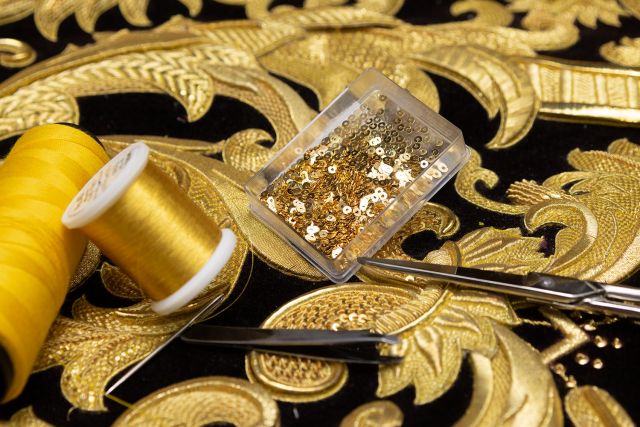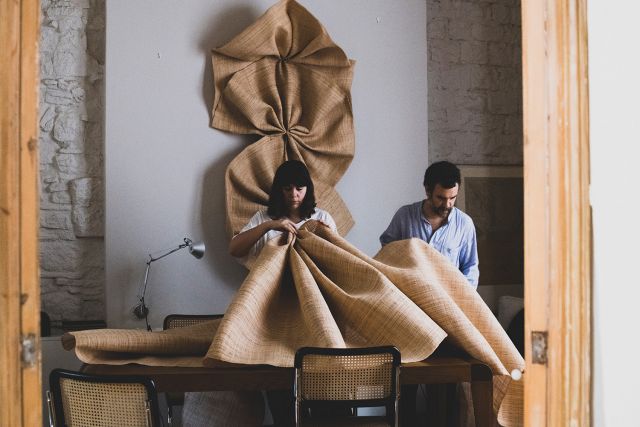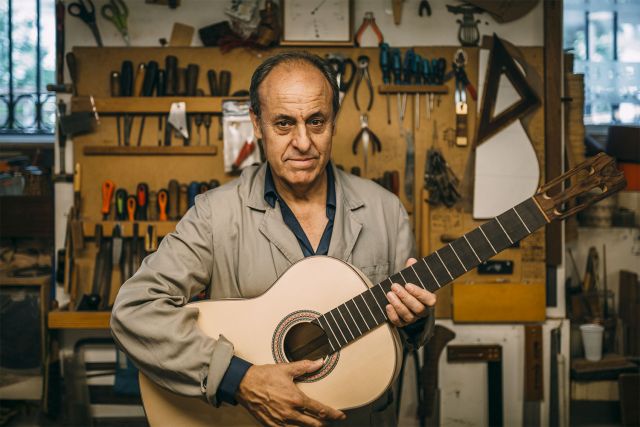This blue velvet devotional scapular is composed of two pieces of cloth that are joined together by ribbons. This allows the religious person to wear the scapular around their neck. On one side, the coat of arms of the brotherhood of El Rico of Malaga (Spain) is embroidered in gold and silk in relief; and on the other side it is Jesus Christ.
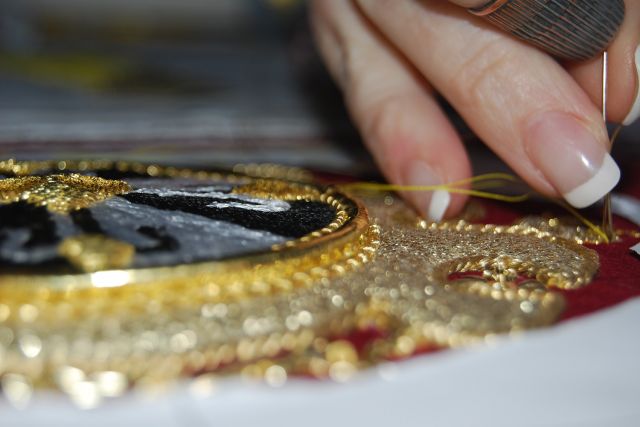
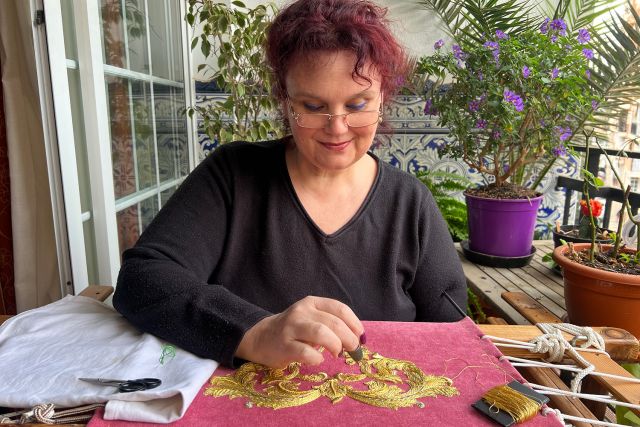
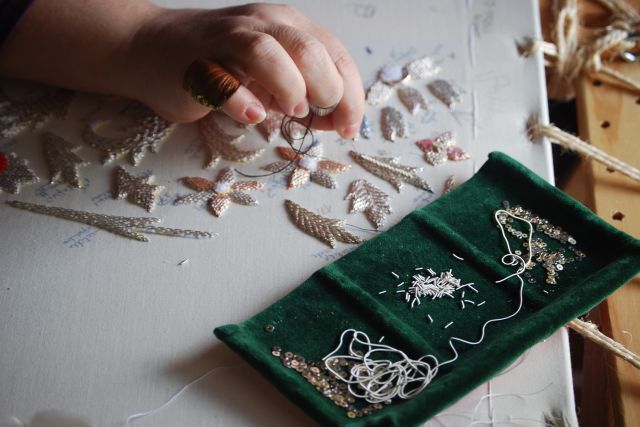
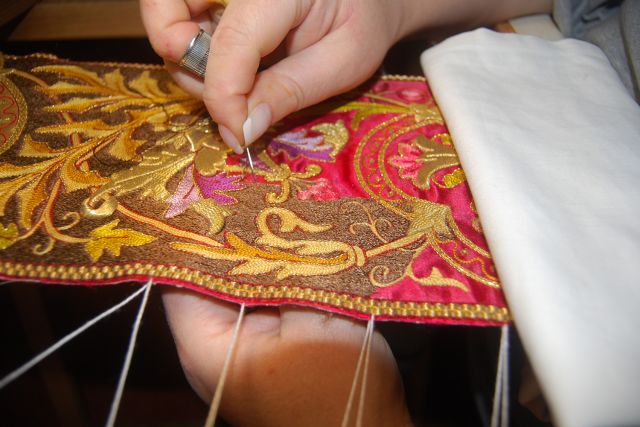
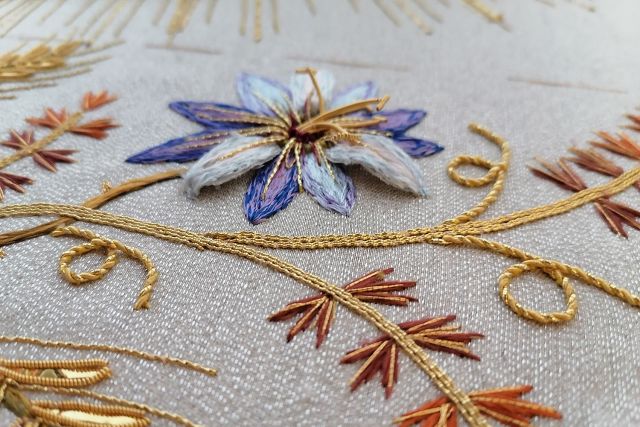
Cristina Badillo Castillo
- Gold thread embroiderer
- Málaga, Spain
- Master Artisan
By appointment only
+34 664167766
Religious textures
- • Cristina is from Málaga, a city with a rich past in embroidery
- • At 18 she found her vocation
- • She works with gold and silk to create details and ornaments for fabrics
With a degree in fine arts, Cristina Badillo Castillo was impressed by gold embroidery from the first time she went to the workshop of an embroiderer friend. She was 18 years old. "After graduating from my degree I decided to learn this craft because of its beauty and the variety of works I could achieve with this technique," says Cristina, who affirms that art has always been part of her life. She began training as an embroiderer first with Juan Rosen and later in the Sevillian workshop of Fernández y Enríquez. In 2009, Cristina opened her own workshop and her first creation was a scapular. Her specialty now is gold and silk embroidery. One of the highlights of her working life was making the banner in gold and silk for the brotherhood of Mary Magdalene of Velez Málaga.
Read the full interviewWorks
Photo: ©Cristina Badillo

Photo: ©Cristina Badillo
This embroidery detail belongs to a saya. The saya is the skirt that carries the images of the Virgin Mary. It is made on ivory cotton velvet and embroidered with gold threads. Although it is a small piece, a wide variety of techniques have been used to enrich it artistically and visually.

Photo: ©Cristina Badillo
The Talc Flower offers a wide range of possibilities, since the wire structure allows the inclusion of a multitude of ornaments such as mother-of-pearl, shells, sequins, crystals or pearls.

Photo: ©Cristina Badillo
The Talc Flower knew its apogy in the 13th and 19th centuries since there were no fabric flowers and natural flowers were scarce at different times of the year. These small works have a wide range of possibilities, since their wire structure allows the inclusion of a multitude of ornaments such as mother-of-pearl, shells, sequins, crystals or pearls, which give the piece a unique and original style.

Photo: ©Cristina Badillo
This embroidery detail belongs to a saya. The saya is the skirt that carries the images of the Virgin Mary. It is made on black cotton velvet and embroidered with a combination of gold, silver and silk threads. A wide variety of techniques have been used, which enrich the piece at an artistic level, creating volumes and visual effects typical of the rococo style.





